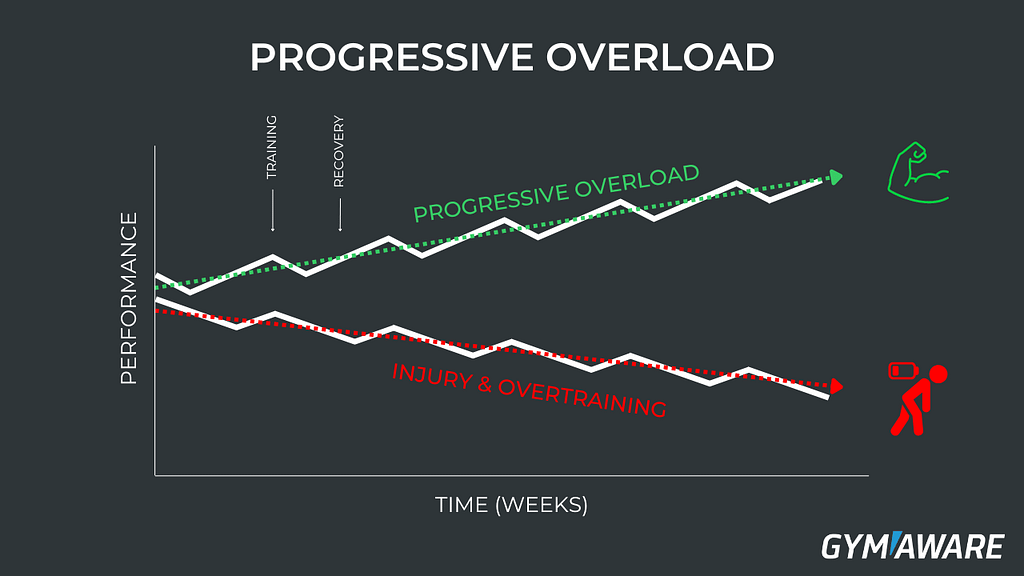Progressive overload is just a fancy way of saying:
“If you want your body to change, you have to keep challenging it.”
It’s the reason you can’t just keep doing 10 lb bicep curls forever and expect toned arms. Your body adapts—so to keep seeing results, you’ve gotta up the intensity over time.
In other words… if your workouts feel “easy,” your progress might be stuck too.
Why It Matters
Progressive overload is key for:
- Muscle growth (aka toned arms, lifted glutes, defined abs)
- Strength gains (yes, you can carry all your groceries in one trip 💅)
- Avoiding plateaus
- Actually seeing the changes you’re working for
Without it? You’ll hit a wall—and workouts will feel pointless. No thanks…

How to Apply Progressive Overload
The good news? You don’t have to go wild and add 50 lbs to the bar every week. There are lots of ways to level up your workouts without going beast mode on day one.
👇 Try These:
- Add weight (the obvious one—but only when your form stays good)
- Add reps or sets (go from 3 sets of 10 to 4 sets of 12, for example)
- Slow down (more time under tension = more challenge)
- Better form or deeper range (like squatting lower or controlling the movement)
- Shorter rest time (less rest = more challenge = more burn)
💡 Example: If you’re doing hip thrusts with 65 lbs and it starts to feel easy, try adding 5–10 lbs next time, or slow down the reps to really feel the squeeze.
How Often Should You Increase?
You don’t need to increase every single workout—your body needs time to adapt and recover.
A good rule of thumb: When it feels too easy and your form is solid, it’s time to level up.
For most people, this happens every 2–3 weeks per exercise. Listen to your body, but don’t be afraid to push yourself.
Can You Progressive Overload Without Weights?
YES. You can totally do this with bodyweight workouts too.
Try things like:
- Adding a resistance band
- Slowing down reps
- Doing more reps or sets
- Shorter rest breaks
- Harder variations (hello, Bulgarian split squats 😅)
It’s not just about lifting heavier—it’s about doing more than you did before, in any way.
Final Thoughts
Progressive overload is the secret sauce to your fitness glow-up. Whether your goal is to get stronger, build muscle, or just feel more confident in your workouts—it’s the piece that makes it all work.
Be patient, stay consistent, and don’t forget: small progress is still progress. That extra rep or added 5 lbs? It adds up. 👏
💬 Let’s Chat Glow Goals!
Are you currently tracking your lifts or trying to get stronger? What’s one exercise you want to level up in? Drop it in the comments!
📌 Want more wellness & fitness tips?
Bookmark this post or explore The Glow Guide section for more insights on training, nutrition, and building better habits.
📩 Stay in the Glow Loop
Subscribe to the newsletter for weekly tips, glow-up guides, and fitness breakdowns made easy (and fun).

Leave a Reply